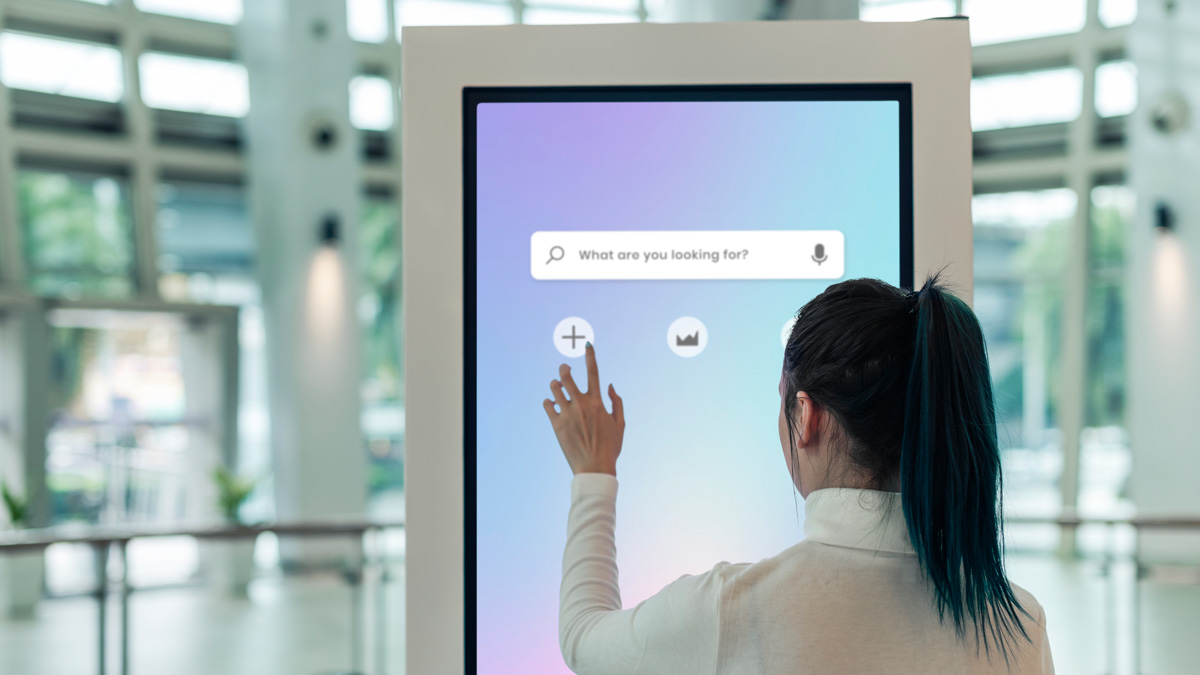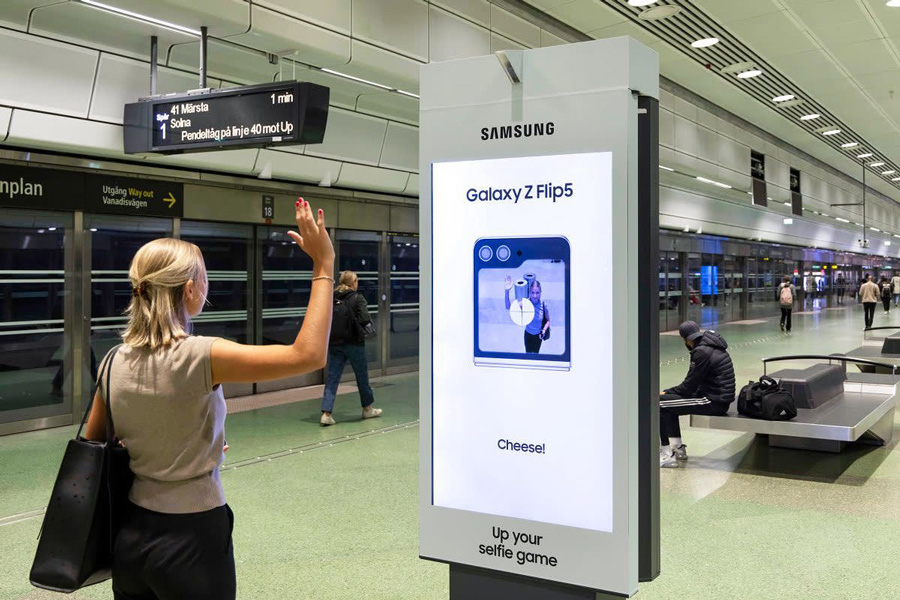
From touchscreen displays to virtual reality experiences, interactive media have found their way into our everyday lives. These are digital content that we actively engage with in real time. While interactive media offers numerous benefits, it also presents certain costs and challenges. The benefits include better business, visibility, and impact, while the costs mostly have to do with time and resources invested and whether you will get an optimum ROI.
In this article, we’ll compare the costs and benefits of interactive media. Let’s go!
Benefits of Interactive Media
The advantages of interactive media go a long way. Let’s explore some of the key benefits that make interactive media attractive regardless of what business you operate.
We have categorized these into four main areas: business, marketing, social impact, and ROI.
Business Benefits
Interactive media can help your business performance and growth in several ways. We’ll look at them here, starting with more user engagement. This topic has been frequently discussed in our blog. One of the first perks of becoming interactive is that you can more easily capture and maintain user attention. (Compare a VR experience to a static billboard, for example.) This increased engagement ultimately means more meaningful time spent with the brand, which in turn leads to more loyalty and advocacy.
Going interactive also means improved customer experience, which is the next benefit. Not all time spent with your brand is meaningful, and users won’t spend precious time for nothing. Interactive media should be immersive and tailored to individual user preferences. This approach ensures each customer feels valued, resulting in an enhanced experience. We’ve previously mentioned that personalization is one of the key components of interactive branding, so feel free to read about it there.

Don’t forget that interactive media also offers valuable data and insights. You can track and make sense of user interactions to figure out customer preferences, behaviors, and feedback. You can use this information to improve your products, services, or marketing efforts.
Marketing & Branding Benefits
One of the greatest upsides to interactive media is its impact on marketing and branding. You can use interactive media to create a memorable experience of your brand, tell your brand’s story in a way that will stick, and stand out like never before.
On the one hand, interactive media extends the reach of your brand. Especially with the omnipresence of social media, you can launch an interactive campaign and gain the attention of a diverse, worldwide audience. (Not that you will necessarily expand into new markets, but being seen that much is a good sign in and of itself.)
On the other hand, interactive media will earn you brand credibility. Content is king (or queen), after all. So, valuable and engaging content will help you position yourself as a leader and trusted source in your industry. Note that it doesn’t end there; People are likely to flock to your website, allowing you to further leverage interactivity by responding promptly to their inquiries or engaging with them in real-time.
Social & Community Impact
The benefits of interactive media go beyond business and marketing benefits as well because you can use them to make a mark in a community or even a society as a whole. (For the latter, remember the brand war between Burger King and McDonald’s. Many of their initiatives utilize interactive media!)
Right now, hundreds of brands are using interactive media to educate users, raise awareness about important issues, or support social causes. An interactive campaign doesn’t have to have a next-gen e-learning platform or a social uprising to drive change.
Even if your brand isn’t in a position to advocate for a meaningful social cause, don’t forget that interactive media fosters community engagement wherever it’s utilized. Create something that resonates with users, and they will share it online, talk about what it means to them, and collaborate to make everything better. That alone leads to a sense of community.
ROI of Interactive Media
The ROI of interactive media varies significantly depending on the industry, target audience, implementation, and quality of the interactive experience. It might not always be the case that benefits outweigh the costs, especially for small businesses with limited budgets.
To wrap up, is it worth it?
We would say yes; the advantages certainly outweigh the costs. We have discussed how interactive media boost customer engagement, enhance your brand’s image, and create a sense of community in your target audience. If these factors don’t equal business growth and profitability for you, remember that the insight you gain from each interactive initiative will be worth it. They will help you make effective data-driven decisions for your marketing efforts and business strategies.
Overall, the benefits of interactive media are clear to us. However, it is also important to consider the costs and challenges, which we will explore in the next section.
Costs & Challenges of Interactive Media
Given the substantial advantages of interactive media, why is its adoption not more widespread? The reason might lie in the challenges associated with their use.
Let’s dive into these obstacles, starting with the biggest one: budgeting and finance.
Financial Costs
Interactive media can be expensive. As a general rule of thumb, developing and implementing interactive media strategies often require a substantial investment. This includes costs of creating the interactive content, plus developing and maintaining the platforms and infrastructure. Certain technologies also require subscriptions and licenses as well. (We’ll talk more about them in a bit.)
The costs vary greatly from medium to medium. Your website and social media already provide you with a basic level of interactivity. Interactive websites can be considered interactive media if they include elements like forms, quizzes, or user-generated content. The level of interaction determines their classification as interactive media.

Take a look at our blog for more examples of interactive campaigns; pick some ideas that will work for you, and you will get an idea of the prices.
Technical & Resource Costs
Some forms of interactive media, like simple interactive websites or basic AR apps, can be developed with relatively low technical investment using existing platforms or open-source tools.
Physically designed Interactive media involves acquiring and maintaining the necessary hardware and software as well as investing in specialized tools and platforms to run on.
Let’s take a VR showroom as an example. It’s quite an immersive, multisensory experience for all users. Still, it also means you need high-quality graphics produced and maintained, advanced video and audio equipment, motion capture systems, content management platforms, etc.
Remember that bringing all these elements together is a highly technical matter for which you will need professionals, from development to graphic design to motion capture and more. You will also need an on-scene staff to manage and maintain the interactive system.
all these elements together is a highly technical matter for which you will need professionals, from development to graphic design to motion capture and more. You will also need an on-scene staff to manage and maintain the interactive system.
Hardware & Software Requirements
You’ve probably thought of hardware and software costs, but it’s worth a nod here nonetheless.
Your hardware and software costs vary significantly depending on the interactive experience you choose to create. A website, for example, will mainly require software licenses and an efficient server. An AR app is trickier because it must interface with the camera systems and architectures of a hundred different phone models.
It gets only more sophisticated from there! Long story short, factor in the software licenses and the hardware you will need for each interactive initiative before you execute.
Development & Maintenance Expenses
Being on the edge of technology is amazing, but it can be buggy sometimes. Therefore, ongoing development and maintenance (based on user feedback) are necessary and will also incur additional costs.
This includes updates, improvements, debugging, and staying competitive within the market. And don’t forget about the possible costs of monitoring and analyzing user interactions to get all that beloved data. The more immersive your campaigns are, the harder it will be to gather, clean up, and interpret user data.
Production Time
It’s hard being in charge of a business. Investments are made with the expectation of a timely return.
The same story is true here: you want to reap the benefits of interactive media, but you may get impatient if you don’t consider the production time. Like many other factors, this one also depends on the complexity of your initiative. Brainstorms and decision-making can happen relatively quickly, but making an interactive solution is another story.
Some solutions (like video games or interactive displays) take months to plan, design, develop, edit, script, test, and deploy. (This timeline assumes seamless coordination between teams, a standard that is often challenging to achieve and sustain.) Implementing interactive media requires time, and streamlined processes are essential to expedite this.
Time Investment
When you’re waiting for production to finish, many of your team members might be able to focus on other efforts. Note that the interactive initiative’s launch also means more time spent managing and promoting them. (We’ve already mentioned responding to users and analyzing the data.)
So, consider your opportunity cost after you have a blueprint for your interactive media. Do you expect them to pay off? Do you have projections to back up those expectations? Is the budget sufficient and ready? Do you have the staff? Do you comply with laws and regulations?
Privacy Concerns
Privacy concerns present a significant challenge in interactive media and are often overlooked. If you collect any user data at all, you should handle it with the highest care.
Let’s start with the obvious: laws and regulations. Anywhere your interactive events and campaigns go, there’s a new set of data protection regulations like the General Data Protection Regulation (GDPR) or the California Consumer Privacy Act (CCPA). Comply with these and obtain the necessary permissions to collect and use user data.
Then, note that users have a right to know how you collect and use their data. So, be crystal clear with them about your policies and mechanism. We also strongly encourage you to give them an explicit opt-out option.
At the end…
The benefits of interactive media are significant. Businesses love them for the bond they can create with the audience, which leads to a sizable ROI. Communities will be captivated by them because they’re fun and they can have a social impact.
However, business owners must also consider the costs and challenges of interactive media. These include financial expenses, time investment, and privacy concerns, among other things.
Plan and execute interactive media strategies right, and your audience will remember you with them for a really long time. If you need a hand with the process, contact us for advice!
Arya




How can I manage costs effectively while still achieving impactful interactive experiences?
To manage costs effectively while creating impactful interactive experiences, start small, use existing platforms, focus on ROI, streamline production processes, and budget wisely. Prioritize user engagement to maximize returns and minimize expenses.